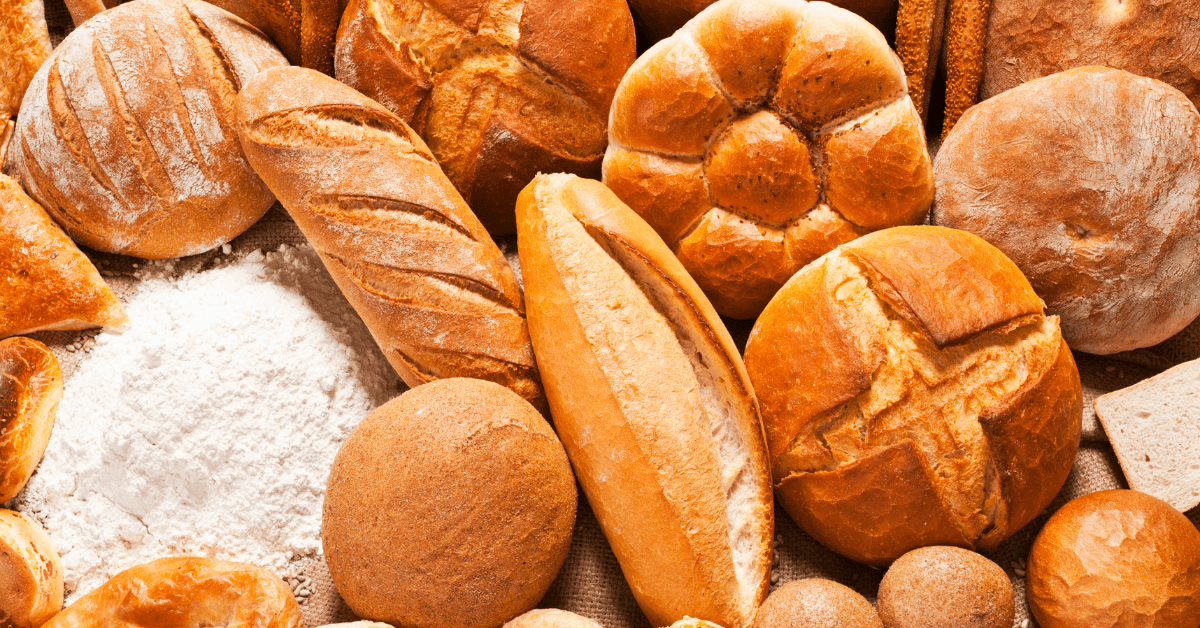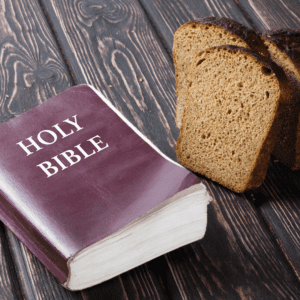
Welcome to a journey through the pages of the Bible, where we explore the profound significance of one of the most common yet symbolic elements – bread. With our deep understanding of biblical narratives, we’re here to guide you through this fascinating topic.
“Bread in the Bible” symbolizes life, sustenance, and divine presence. It’s a recurring element in both the Old and New Testaments, representing daily food, miraculous provision, and spiritual nourishment. From unleavened bread during Passover to Jesus Christ referring to Himself as the “bread of life”, bread holds a profound place in biblical narratives.
We have much more to share about the different types of bread mentioned in the Bible, their unique meanings, and their significance in Christian rituals. Join us as we delve deeper into this intriguing topic.
The Historical Significance of Bread
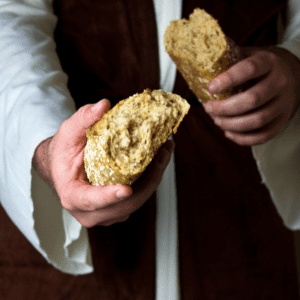
Did you know that bread is one of the oldest prepared foods? It dates back over 10,000 years! Imagine our ancestors grinding grains between simple stone tools to make the first loaves.
In the Bible, bread is mentioned hundreds of times. It’s a symbol of life, sacrifice, and God’s love for humankind. In fact, Jesus Himself is referred to as the “bread of life”.
Then Jesus declared, “I am the bread of life. Whoever comes to me will never go hungry, and whoever believes in me will never be thirsty." John 6:35
Now, let’s talk about the art of bread making. The ancient Egyptians were the real MVPs here. They honed this craft thousands of years ago.
In biblical times, bread was made from various grains. We’re talking wheat, barley, millet, and spelt. Each grain added its unique flavor and texture to the bread.
And who was making this bread? Well, it was the women who took on this daily task. They harvested the grain, milled the flour, and prepared the dough. It was a labor of love, a ritual that nourished families and communities.
So, bread in the Bible isn’t just about food. It’s a symbol of life, a testament to human ingenuity, and a sacred element in religious rituals. It’s a humble loaf with a rich history.
Bread in the Old Testament
Bread, or ‘lechem’ as it’s known in Hebrew, is a significant symbol in the Old Testament. It’s mentioned over 300 times! That’s a lot of bread talk, right?
Now, bread in the Old Testament isn’t just about food. It’s a symbol of life and sustenance.
"By the sweat of your brow you will eat your bread until you return to the ground." Genesis 3:19
Here, bread represents the daily toil and struggle for survival.
But bread isn’t all about hardship. It’s also about divine provision. Remember the story of the Israelites wandering in the desert? God provided them with manna, a miraculous bread from heaven, to sustain them during their journey.
When the Israelites saw it, they said to each other, “What is it?” For they did not know what it was. Moses said to them, “It is the bread the Lord has given you to eat." Exodus 16:15
And then there’s the bread of the Presence. This was a special bread kept in the Tabernacle as a continual reminder of God’s presence. Twelve loaves were baked and arranged on a table of pure gold. Talk about a divine bakery!
“Take the finest flour and bake twelve loaves of bread, using two-tenths of an ephah for each loaf. Arrange them in two stacks, six in each stack, on the table of pure gold before the Lord. By each stack put some pure incense as a memorial portion to represent the bread and to be a food offering presented to the Lord.” Leviticus 24:5-7
Bread was also used in grain offerings and sacrifices, emphasizing its importance in worship rituals.
So, as you can see, bread in the Old Testament is more than just a dietary staple. It’s a symbol of life, divine provision, and a constant reminder of God’s presence.
Bread in the New Testament
Bread, my friend, continues to play a starring role here. It’s mentioned over 60 times! But the New Testament takes the symbolism of bread to a whole new level.
Remember the miracle of the loaves and fishes? Jesus fed a crowd of thousands with just a few loaves of bread and a couple of fish (Matthew 14:13-21). This wasn’t just about filling hungry bellies. It was a powerful demonstration of Jesus’s compassion and divine power.
But the most significant mention of bread in the New Testament is during the Last Supper. Here, bread takes on a deeply spiritual meaning. Jesus breaks bread and declares this.
"This is my body, which is given for you. Do this in remembrance of me" Luke 22:19
At this moment, bread becomes a symbol of Jesus’s sacrifice. It represents His body, broken on the cross for the salvation of humanity.
And then there’s Jesus’s declaration in John 6:35 (see the verse in the first section). Here, bread symbolizes spiritual nourishment and eternal life through faith in Jesus.
So, in the New Testament, bread is more than just a dietary staple. It’s a symbol of Jesus’s sacrifice, His divine power, and the spiritual nourishment He offers.
Communion Bread
Communion is a special practice where believers eat bread and drink wine or grape juice to remember Jesus Christ’s sacrifice on the cross. The bread is a symbol of Jesus’s body that was given to people.
Communion started at the Last Supper, a meal that Jesus had with His disciples before He was crucified. During the meal, Jesus took bread, thanked God for it, broke it, and gave it to His disciples. He told them that the bread was His body and they should eat it to remember Him.
In Communion, the bread stands for Jesus’s body. When believers eat the bread, they remember that Jesus died on the cross for our wrongdoings, sickness, sadness, and shame. Eating the bread is not just remembering in our minds, but also in our spirits.
"This is my body, which is given for you" Luke 22:19
The bread in Communion also shows the New Covenant or promise. Just like the bread is broken, Jesus’s body was broken to make the New Covenant. This brought forgiveness and made us right with God. When believers eat the bread, they remember Jesus’s death and look forward to when God’s kingdom will be fully here.
The bread in Communion also shows the unity of all believers. Just like many grains are used to make one loaf of bread, believers from different places and backgrounds are all one in Christ. Eating the same bread shows that we all belong to Christ and are united as His Church.
The bread in Communion is a symbol of Jesus’s sacrifice, the New Covenant, and the unity of all believers. When believers eat the bread, they remember Jesus’s sacrifice, celebrate the New Covenant, and show their unity in Christ.
Types of Breads in the Bible
In the Bible, bread isn’t just bread. It comes in different types, each with its unique symbolism.
Unleavened bread
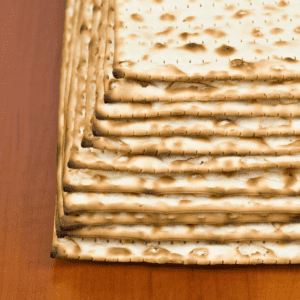
Unleavened bread is bread made without yeast. In the Bible, it has a special meaning. It’s a symbol of purity, freedom, and the quick escape of the Israelites from Egypt.
The Bible first talks about unleavened bread in the book of Exodus. When the Israelites were about to leave Egypt, God told them to eat unleavened bread. This was because they had to leave quickly and didn’t have time for the bread to rise. Every year after that, they had a week-long celebration called the Feast of Unleavened Bread. During this time, they ate only unleavened bread.
In the Bible, yeast is often a symbol for doing wrong or sin. Just like a little yeast can make a whole loaf of bread rise, a little bit of doing wrong can affect a person’s whole life. By eating unleavened bread, the Israelites were showing that they wanted to live right.
The New Testament of the Bible also talks about unleavened bread. Paul, one of the writers, uses it as a picture of living a life of truth and sincerity, without doing wrong.
Today, many Christians still remember the meaning of unleavened bread during the Passover and the Feast of Unleavened Bread. It reminds them of how God saved the Israelites and how Jesus, who is often called our Passover Lamb, saves us from doing wrong.
Unleavened bread in the Bible is a symbol of living right, freedom, and God’s saving power. It reminds us of what God has done in the past and what He continues to do today.
Manna
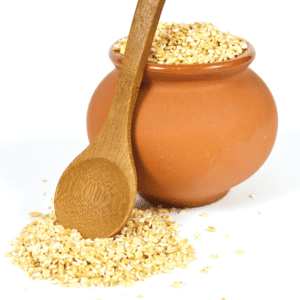
Manna is a special food in the Bible that God gave to the Israelites when they were traveling in the desert for 40 years. The name “manna” means “What is it?” because the Israelites were surprised when they first saw it.
Manna looked like small white flakes and tasted like honey. It appeared on the ground every morning after the dew had gone.
God told the Israelites to collect just enough manna for each day. If they tried to keep extra for the next day, it would go bad. But on Fridays, they were told to collect twice as much because manna wouldn’t appear on the Sabbath, their day of rest.
Manna wasn’t just food. It also taught the Israelites to trust God to take care of them every day. It reminded them to rest on the Sabbath and to rely on God.
Manna also had a special meaning because it was a sign of Jesus. Just like manna fed the Israelites in the desert, Jesus gives spiritual food and life to people.
When the Israelites reached the land God promised to give them, the manna stopped. They started eating the food that grew in the new land. This marked the end of their long journey and the start of a new life.
Manna in the Bible shows us how God takes care of His people and teaches them to trust and follow Him. It’s a reminder of God’s love and care in our own lives.
Ezekiel bread
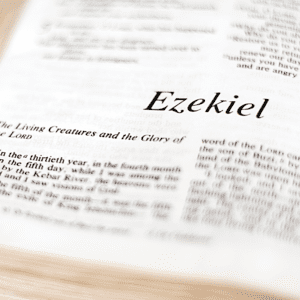
Ezekiel bread is a special bread in the Bible named after the prophet Ezekiel. It’s made from different grains and beans, as mentioned in Ezekiel 4:9. This bread is a symbol of getting through tough times.
Ezekiel was told to make and eat this bread during a pretend siege, which was a sign of a real siege that was going to happen in Jerusalem. The different ingredients in Ezekiel bread show that during a siege, people had to use whatever food they had.
Ezekiel bread shows that even in hard times, God provides. The mix of grains and beans also shows the unity of the people of Israel under God’s promise.
Today, Ezekiel bread is popular as a healthy food. It’s made from sprouted grains and beans, which makes it a good source of protein. It’s often eaten by people who want to eat healthy or follow a plant-based diet.
Ezekiel bread in the Bible is a symbol of getting through tough times and God’s care. It reminds us of God’s love and the strength of people when they face hard times.
Showbread in the Bible
Showbread is a special bread in the Bible. The recipe is found in Leviticus 24:5-7. It was made from good quality flour and baked into twelve loaves. These loaves were put in two stacks of six on a gold table. Frankincense, a type of incense, was put on each stack as an offering to God.
“Take the finest flour and bake twelve loaves of bread, using two-tenths of an ephah for each loaf. Arrange them in two stacks, six in each stack, on the table of pure gold before the Lord. By each stack put some pure incense as a memorial portion to represent the bread and to be a food offering presented to the Lord." Leviticus 24:5-7
Every Sabbath day, new showbread was put out, and the priests ate the old bread in a holy place. This was a regular part of worship in the Tabernacle and the Temple.
Showbread is a symbol of God always being with us and taking care of us. The twelve loaves stand for the twelve tribes of Israel, showing their unity under God’s promise. The table where the bread was put shows God’s guidance.
Showbread also points to Jesus, who is called the ‘Bread of Life’. Just like the showbread was always in the Tabernacle, Jesus is always with us, giving us spiritual life and food.
Today, even though the original recipe and ritual of showbread are no longer used, its meaning is still important. It reminds us that God is always with us, He takes care of us, and we are united under His promise.
So, showbread in the Bible is a symbol of God’s constant presence, His care, and the unity of His people. It reminds us of God’s love and our spiritual connection with Him.
Loaves in the New Testament

The New Testament in the Bible tells several stories where bread is very important. These stories are not just about giving food to hungry people, but they also have a deep spiritual meaning.
One famous story is about Jesus feeding five thousand men with just five loaves of bread and two fish. This story is told in all four Gospels, Matthew 14:13-21, Mark 6:31-44, Luke 9:10-17, and John 6:5-15, which shows it’s very important. In the story, Jesus’s disciples wanted to send the people away to get food because it was getting late. But Jesus took the bread and fish, thanked God for them, broke the bread, and gave it to His disciples to give to the people. Everyone ate and was full, and there were even twelve baskets of food left over.
Another story is about Jesus feeding four thousand men with just seven loaves of bread and a few small fish. This story is told in the books of Matthew and Mark. In this story too, everyone ate and was full, and there were seven baskets of food left over.
The bread in these stories shows that God takes care of us and gives us more than we need. It also points to the time when people would eat bread as a sign of Jesus’s body during communion. This means that Jesus, like the bread, gives us spiritual food and fills us up.
The bread in the New Testament is not just food. It’s used for miracles, it shows God’s care, and it stands for Jesus, who is called the Bread of Life.
Bread in the Bible Conclusion
Bread in the Bible is more than just a staple food. It’s a symbol of God’s providence, a tool for teaching faith and obedience, and a representation of Jesus Christ, the Bread of Life. From the manna in the wilderness to the loaves used in Jesus’ miracles, each instance of bread carries a unique significance. The different types of bread, such as unleavened bread, showbread, and Ezekiel bread, each hold their own symbolic meanings and historical contexts.
Understanding the role of bread in the Bible enriches our reading of the scriptures and deepens our appreciation of God’s continual presence and provision. Whether we’re exploring the historical significance of bread, its mention in the Old and New Testaments, its role in Christian rituals and symbolism, or the different types of bread mentioned in the Bible, we’re reminded of God’s faithfulness and the spiritual nourishment He provides.
As we break bread, may we remember its rich symbolism and the lessons it teaches us about faith, obedience, and our dependence on God. Just as bread sustains us physically, may we seek the Bread of Life for our spiritual sustenance and growth.

